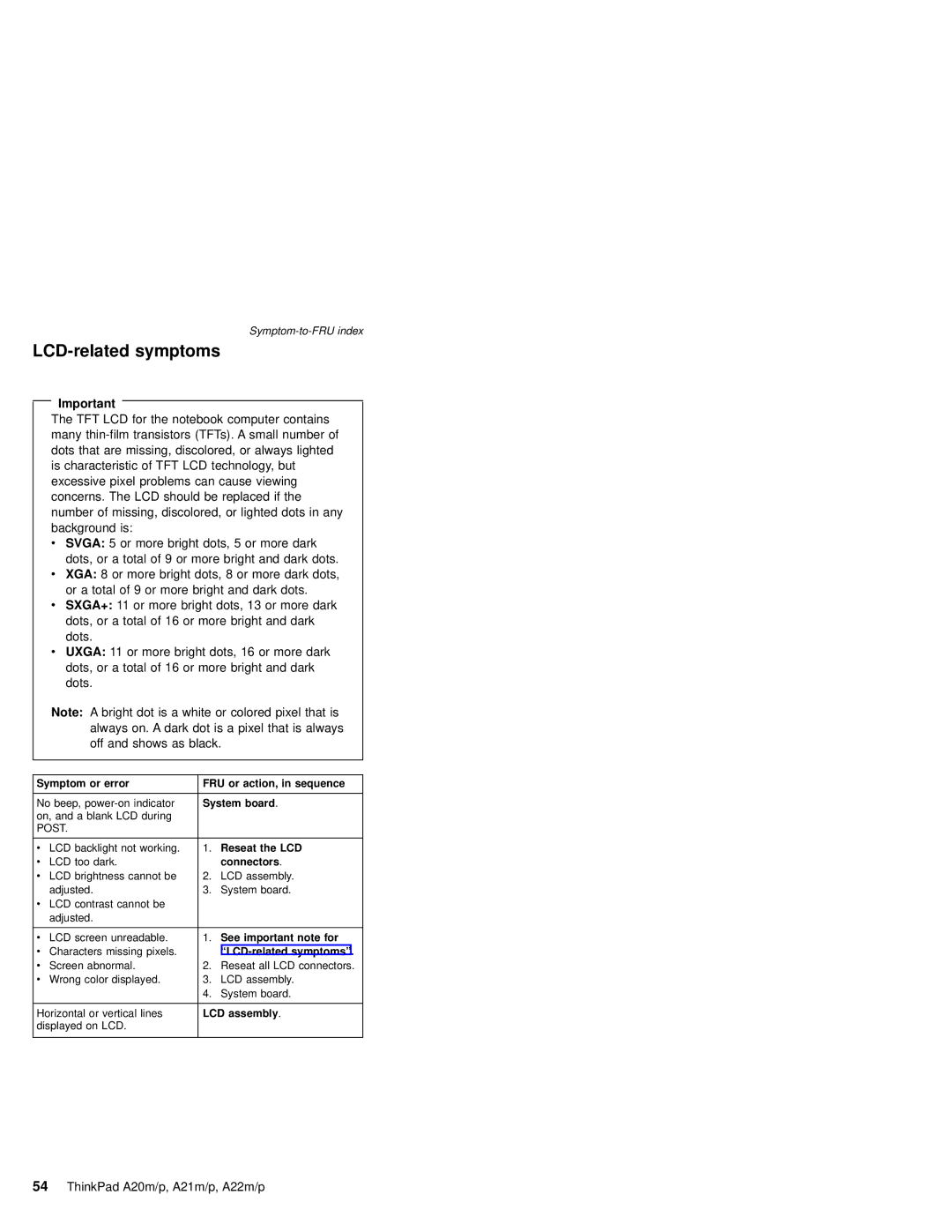
LCD-related symptoms
Important
The TFT LCD for the notebook computer contains many
vSVGA: 5 or more bright dots, 5 or more dark dots, or a total of 9 or more bright and dark dots.
vXGA: 8 or more bright dots, 8 or more dark dots, or a total of 9 or more bright and dark dots.
vSXGA+: 11 or more bright dots, 13 or more dark dots, or a total of 16 or more bright and dark dots.
vUXGA: 11 or more bright dots, 16 or more dark dots, or a total of 16 or more bright and dark dots.
Note: A bright dot is a white or colored pixel that is always on. A dark dot is a pixel that is always off and shows as black.
Symptom or error | FRU or action, in sequence | ||
|
| ||
No beep, | System board. | ||
on, and a blank LCD during |
|
| |
POST. |
|
| |
|
|
| |
v LCD backlight not working. | 1. | Reseat the LCD | |
v | LCD too dark. |
| connectors. |
v LCD brightness cannot be | 2. | LCD assembly. | |
| adjusted. | 3. | System board. |
v LCD contrast cannot be |
|
| |
| adjusted. |
|
|
|
|
|
|
v | LCD screen unreadable. | 1. | See important note for |
v | Characters missing pixels. |
|
|
v | Screen abnormal. | 2. | Reseat all LCD connectors. |
v | Wrong color displayed. | 3. | LCD assembly. |
|
| 4. | System board. |
|
| ||
Horizontal or vertical lines | LCD assembly. | ||
displayed on LCD. |
|
| |
|
|
|
|
